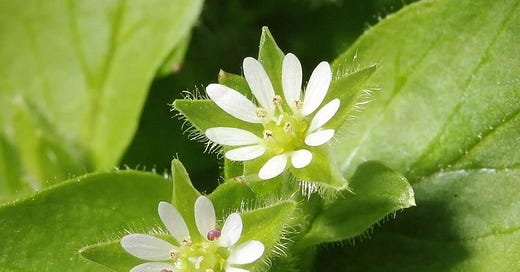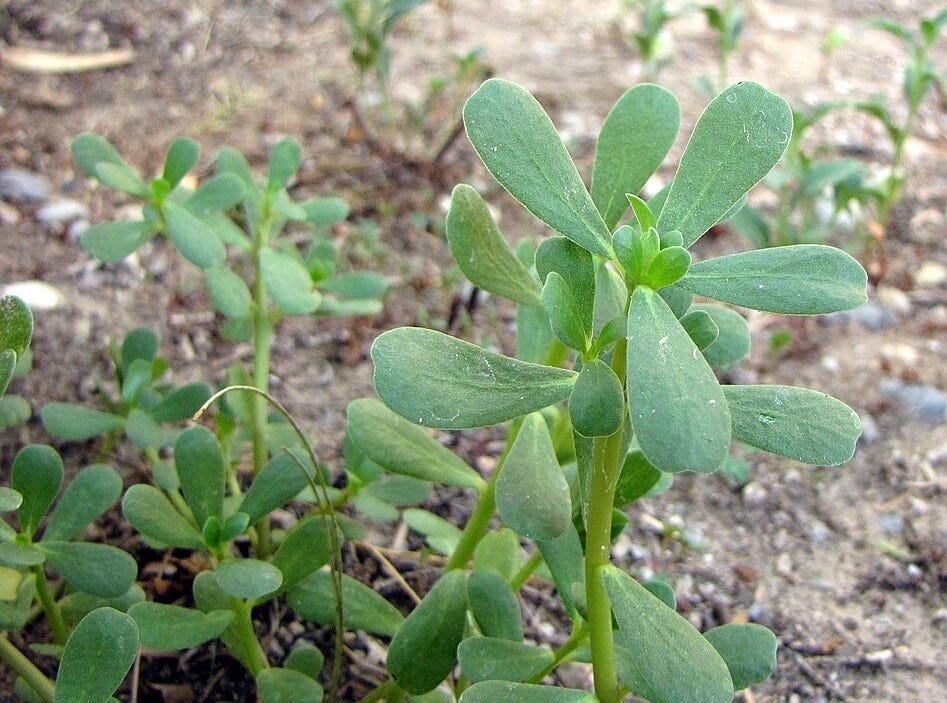April's Special Days: A Potpourri of Celebrations
Herb of the Year for 2025. Chamomile (Matricaria chamomilla). Selected by the International Herb Association
Flower of the Month for April: Daisy
April is Stress Awareness Month (those taxes, you know)
April feature: Wild Weeds, Native Herbs
Week 1 Community Garden Week
April 7. World Health Day
April 12. Passover Eve
April 13. Yesterday was National Licorice Day. An immune-system booster, licorice helps to stave off respiratory ailments.
Week 2
April 14. Tomorrow is Tax Day. Thought I’d remind you a day early, just in case you’ve forgotten.
April 15. Jackie Robinson Day. A good day to celebrate Robinson and the Boys of Summer and how a buttermilk cake may have boosted them to the World Series. Also a day to be mindful of how easily gains can be lost.
April 16. National Orchid Day. In A Plain Vanilla Murder, China Bayles discovers that vanilla is actually an orchid. (You knew that, didn’t you?)
April 18. Arbor Day. First observed in 1872, in Nebraska. Planting trees helps us tackle the climate crisis.
April 20. Easter Sunday. Passover ends.
Week 3
April 22. Earth Day. This year’s theme: "Our Power, Our Planet," focusing on the urgent need for a shift to renewable energy. Can you help get this message across to legislators?
April 23. St. George's Day. Be on the lookout for dragons. A pocketful of tarragon might help fend them off.
April 25: National Zucchini Bread Day. (Nice, but in April? Doesn't this belong in July, when zukes are coming out our ears?)
Week 4
April 29: On this day in 1796, Amelia Simmons' American Cookery was published, the first cookbook by an American author.
May 4. National Orange Juice Day. A good day to learn about the threat facing orange groves across the planet.
Wild Weeds, Native Herbs

A weed is a plant whose virtues have not yet been discovered. —Ralph Waldo Emerson
Let’s take a step back and reconsider our relationship with the so-called “weeds” in our gardens. What if, instead of frowning when we spot a renegade plant in the flower bed, we started thinking of them as native herbs instead? The wildlings around us are actually nature’s sturdy little multi-taskers, eager to pitch in. So let’s stop being so quick to yank them out and start being a little more, shall we say, open-minded.
Here’s a springtime introduction to five wild plants that could be popping up near you any day now. They have a long history of being useful to humans—and trust me, they’re more than just background noise in the garden. They’re here to help!
Chickweed (Stellaria media)
This delightful little plant might be the underdog of your garden, but it packs a punch—especially in salads. Chickweed is packed with a zippy, fresh flavor, and its seeds are the snack of choice for wild birds and chickens. (It comes by the name chickweed naturally. My Barred Rocks and Rhode Island Reds race for a taste as soon as it’s out of the ground.) It’s also traditionally used to treat liver and kidney ailments, coughs, rheumatism, and pleurisy. And yes, this is the same plant you read about in Dead Man’s Bones (China Bayles #13), where its European cousin, Stellaria holostea, is the signature herb.

Dandelion (Taraxacum officinale)
Ah, the infamous dandelion. You probably have a front-row view of it from your window right now, taunting you to pull it out. But why not embrace it? The young leaves make a great addition to your spring salads (go ahead, surprise your taste buds), while the blossoms can be made into wine—yes, you read that right, dandelion wine! The roots? Those can be dried, roasted, and brewed into the coffee substitute that helped Americans survive the Civil War. Not only a diuretic, but also anti-inflammatory, antioxidant, and immune-boosting—dandelions truly are the overachiever of the plant world.

Milkweed (Asclepias syriaca)
Milkweed’s resume is impressively long, and we’re just getting started. Native Americans used its fibers to create twine and netting, while the latex sap was turned into chewing gum—nature’s bubblegum, if you will. The fluffy seeds served as stuffing for pillows, and the root decoction was used to treat everything from rheumatism to gallstones. During WWII, kids were supplied with bags and recruited to harvest the mature seed pods to replace the hard-to-get kapok in lifejackets. Each kid was encouraged to fill at least two sacks apiece (the amount it took to fill one jacket) for 15 to 20 cents per bag. Monarch butterflies are absolute fanatics of this plant, as it’s their go-to food for their larvae. Not only does milkweed have a practical side, it also plays a vital role in supporting our pollinators.
Purslane (Portulaca oleracea)
This sprightly herb made its way to North America from India via Europe, making friends all t he way. You’ll find it in salads, soups, and even pickles—definitely a crowd-pleaser. The tiny black seeds can be sprinkled on baked goods (hello, fancy muffins) or used in salad dressings. Packed with vitamins and minerals, purslane is a powerhouse of nutrition and flavor. In Chinese folklore, it’s called the "vegetable for long life," which might just make it the secret to immortality (or at least a longer spring season). You’ll find these in the garden shop under the Latin name, Portulaca. They’re hybrids, though, and not quite as tasty as those on the wild side.

Queen Anne’s Lace (Daucus carota)
Did you know that this wildflower is actually a relative of the common carrot? Queen Anne’s Lace is a European import, likely carried across the Atlantic by women who knew just how useful this plant could be in regulating fertility. And in case you're wondering, it's still on the list of plants with medicinal uses, though a little caution is advised. (Remember, it’s a case of "know your plants"—China Bayles fans will recognize the dangers of mistaken identity from Queen Anne's Lace.) As an extra perk, the flowers are a favorite of bees and pollinators, making this a fantastic addition to your garden if you’re aiming to boost biodiversity.
The next time you spot one of these "weeds," think twice before reaching for the hoe. You might just be looking at the next unsung hero of your herb garden—or at least the subject of an interesting conversation over tea!
And now for some fun—a new China Bayles ebook!
Many of you have asked me why the first three books in the Pecan Springs mysteries series have never made it into ebook format. After all, they’re the first chapters of a successful, decades-long series. They’re available in print and audio formats. Why aren’t they in digital?
I’ll save that long, tangled story for later. For now, I am delighted to tell you that the first of these books will be available right here on Substack, beginning in June. Every Friday, I’ll be sending paid subscribers the first book, restored to its original title, Bitter Taste of Garlic. The second and third books will follow in 2026 and 2027.
I’ve learned a lot about the writing craft since I wrote these books in the early 1990s, so I’m tackling the revisions with real enthusiasm. The new editions will be substantially rewritten and updated, with additional bonus material for each episode, including notes on the writing process, on plot and character development, and on serializing fiction—as well as (of course) on growing and using herbs. We live in a digital world now, so there will be pictures and links to curated supplemental materials that simply weren’t available 30-plus years ago, when the first editions were published. I’m also looking forward to answering your questions in our usual community discussions
Everybody, thanks for reading! Paid subscribers, stay tuned for more creative ways to use these amazing little green plants that add so much to our gardens, and to our lives . . .
Keep reading with a 7-day free trial
Subscribe to Thyme, Place & Story to keep reading this post and get 7 days of free access to the full post archives.






